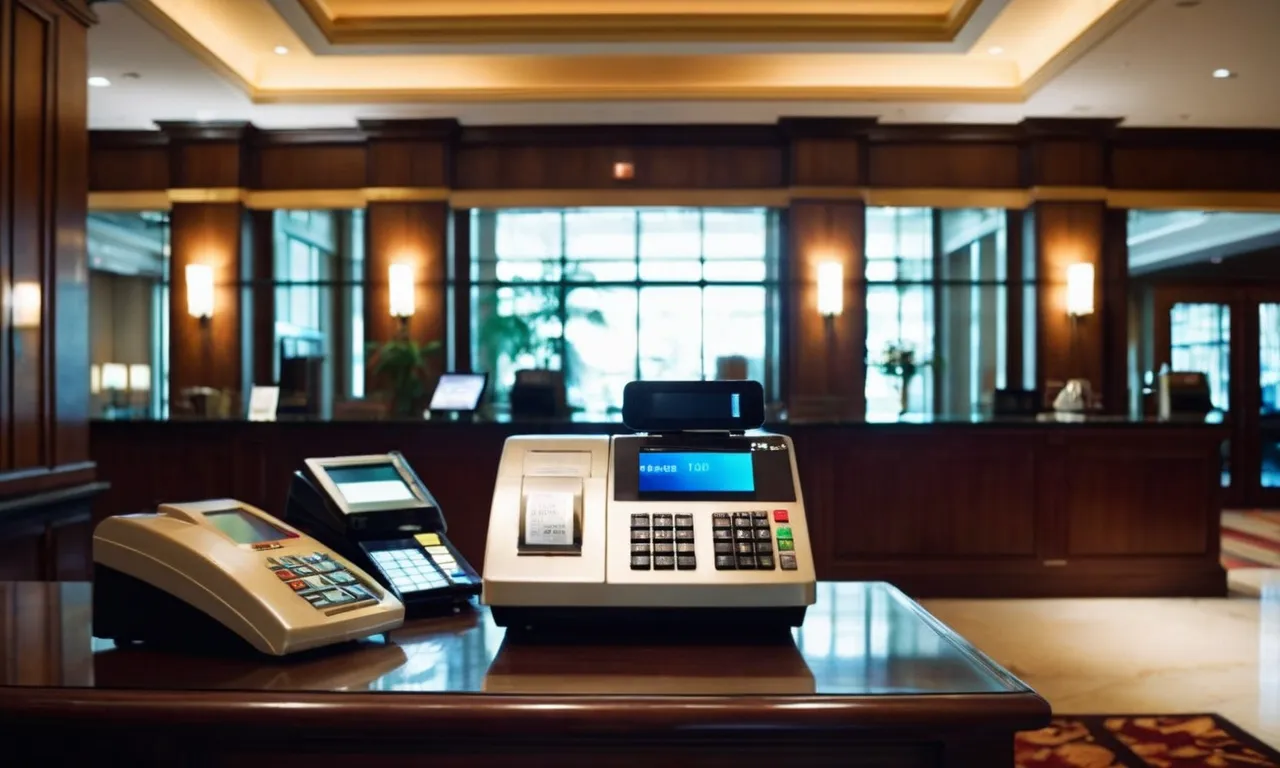How Much Do Hotel Owners Make? A Comprehensive Guide
Owning a hotel can be a lucrative business venture, but the amount of money a hotel owner can make varies greatly depending on several factors. If you’re considering investing in the hospitality industry or simply curious about the potential earnings, this article will provide you with a comprehensive overview of how much hotel owners make.
If you’re short on time, here’s a quick answer to your question: Hotel owners can earn anywhere from a modest income to millions of dollars annually, depending on factors such as the hotel’s size, location, occupancy rates, and operational costs.
In this article, we’ll delve into the various factors that influence a hotel owner’s income, explore different ownership models, and provide insights into the potential profits and challenges associated with owning a hotel.
Whether you’re an aspiring entrepreneur or simply interested in the hospitality industry, this guide will equip you with valuable information to better understand the financial aspects of hotel ownership.
Factors Influencing Hotel Owner’s Income
As a hotel owner, your income is subject to a multitude of factors that can either boost or hinder your profitability. Understanding these factors is crucial for making informed decisions and maximizing your earnings. Let’s delve into the key elements that shape a hotel owner’s income.
Hotel Size and Category
The size and category of your hotel play a significant role in determining your potential income. Larger hotels with more rooms and higher-end categories tend to generate higher revenue streams. However, they also come with higher operational costs.
According to a study by HotelManagement.net, luxury hotels in the U.S. reported an average profit of $51.28 per available room in 2021, while economy hotels averaged $28.69 per available room.
Location and Demand
The location of your hotel is a game-changer when it comes to income potential. Hotels situated in high-demand areas, such as tourist destinations, business hubs, or major cities, can command higher room rates and enjoy higher occupancy levels.
On the flip side, hotels in less desirable locations may struggle to attract guests, leading to lower revenue. According to a Statista report, hotels in urban areas in the U.S. achieved an average revenue per available room (RevPAR) of $86.36 in 2021, while hotels in suburban areas had a RevPAR of $61.66.
Occupancy Rates and Revenue Management
Occupancy rates are a critical factor in determining a hotel owner’s income. Higher occupancy rates translate into more revenue, while low occupancy can severely impact profitability. Effective revenue management strategies, such as dynamic pricing, promotional offers, and strategic marketing, can help boost occupancy rates and maximize revenue.
According to HotelNewsResource.com, a 1% increase in occupancy can result in a 3% increase in revenue per available room (RevPAR).
Operational Costs and Efficiency
Keeping operational costs in check is crucial for maximizing profits as a hotel owner. Expenses such as staff salaries, utilities, maintenance, and marketing can quickly eat into your revenue if not managed effectively.
Implementing cost-saving measures, optimizing staffing levels, and leveraging technology to streamline operations can help increase efficiency and reduce overhead expenses. According to a report by HospitalityNet, labor costs account for approximately 45-50% of a hotel’s total operating expenses, making it the largest cost component 😮.
By understanding and strategically managing these factors, hotel owners can navigate the complexities of the industry and maximize their income potential. It’s a delicate balance of providing exceptional guest experiences while maintaining operational efficiency and cost control 👍.
Ownership Models and Revenue Streams
Franchise vs. Independent Hotels
Hotel ownership can take two primary forms: franchised or independent. Franchised hotels operate under a well-known brand name, such as Marriott, Hilton, or Holiday Inn. These hotels pay ongoing fees and royalties to the parent company in exchange for brand recognition, marketing support, and access to centralized reservation systems.
Independent hotels, on the other hand, operate without any affiliation to a major chain. While they have greater autonomy, they often face challenges in terms of visibility and market reach.
According to Statista, as of 2021, there were approximately 30,000 franchised hotels and 18,000 independent hotels in the United States. Franchised hotels accounted for nearly 63% of the total hotel market.
This data highlights the dominance of franchised brands in the industry, which can provide advantages in terms of brand recognition, customer loyalty programs, and economies of scale.
Revenue Sources: Room Rates, Food and Beverage, Amenities
Hotel owners generate revenue from various sources, with room rates being the primary contributor. Room rates can vary significantly based on factors such as location, amenities, seasonality, and market demand.
According to STR, room revenue typically accounts for around 60-70% of a hotel’s total revenue.
Food and beverage operations, including restaurants, bars, and catering services, are another significant revenue stream for hotels. These services not only cater to hotel guests but can also attract local patrons.
Amenities such as spas, fitness centers, and golf courses can also generate substantial revenue for hotels that offer these services. It’s worth noting that the revenue mix can vary significantly depending on the hotel’s target market, location, and overall positioning.
Management Contracts and Leasing Arrangements
Hotel owners can choose to operate their properties independently or enter into management contracts or leasing arrangements with established hotel brands or management companies. Under a management contract, the owner retains ownership of the property while a third-party company oversees the day-to-day operations, including staffing, marketing, and revenue management.
In exchange, the management company receives a portion of the hotel’s revenue or profits.
Leasing arrangements, on the other hand, involve the owner leasing the property to a hotel operator for a fixed period, typically ranging from 10 to 30 years. The operator assumes full responsibility for the hotel’s operations and pays a predetermined rent to the owner.
This arrangement can provide a more stable and predictable income stream for the owner but may limit their potential upside during periods of high demand or profitability.
According to a report by HVS, the average base management fee charged by hotel management companies in 2020 was around 3.5% of total revenue, with additional incentive fees based on performance metrics. The choice between management contracts and leasing arrangements often depends on the owner’s risk tolerance, investment objectives, and level of involvement desired in the hotel’s operations.
Profitability and Financial Performance
Average Hotel Profit Margins
The hotel industry’s profitability hinges on a delicate balance between revenue generation and cost management. According to a recent report by PKF Hospitality Research, the average profit margin for hotels in the United States stands at around 38.3%.
However, this figure can vary significantly based on factors such as location, brand affiliation, and property type. Luxury hotels, for instance, typically enjoy higher profit margins, averaging around 45%, while limited-service properties may see margins closer to 30%.
It’s worth noting that profit margins can fluctuate year-over-year due to changes in market conditions, occupancy rates, and operating expenses. During periods of high demand, hotels may be able to command higher room rates, leading to increased revenue and potentially higher profit margins.
Conversely, economic downturns or oversupply in a market can put downward pressure on rates and occupancy, squeezing profit margins. Successful hotel owners must remain agile and adapt their strategies to maximize profitability in any given market environment.
Return on Investment (ROI) Considerations
When evaluating the potential profitability of a hotel investment, savvy investors look beyond just profit margins and consider the overall return on investment (ROI). This metric takes into account the initial capital outlay, ongoing operating costs, and projected cash flows over the investment’s holding period.
According to industry studies, the average ROI for hotel properties ranges from 7% to 12%, depending on factors such as location, property age, and market conditions.
To maximize ROI, hotel owners must carefully manage expenses, optimize revenue streams (e.g., room rates, ancillary services, food and beverage), and maintain high occupancy levels. Implementing strategies like revenue management, efficient staffing, and strategic marketing can significantly impact the bottom line and boost ROI.
Additionally, owners should consider periodic renovations and upgrades to keep their properties competitive and attractive to guests, which can ultimately drive higher room rates and revenue.
Financing Options and Debt Management
Acquiring or developing a hotel often requires substantial capital investment, and financing plays a crucial role in determining profitability and long-term success. Hotel owners typically rely on a combination of debt and equity financing to fund their projects.
Common financing options include commercial mortgages, construction loans, and mezzanine financing, with lenders carefully evaluating the project’s feasibility, market conditions, and the owner’s track record.
Effective debt management is essential for hotel owners to maintain a healthy financial position. Key considerations include negotiating favorable loan terms, managing interest rate risk, and adhering to debt covenants.
According to industry reports, the average debt service coverage ratio (DSCR) for hotels in the United States is around 2.5, indicating a relatively strong ability to service debt obligations. However, owners must remain vigilant and proactively manage their debt levels to weather economic cycles and maintain profitability.
Challenges and Risks of Hotel Ownership
While owning a hotel can be a lucrative business venture, it’s essential to be aware of the challenges and risks that come with it. The hospitality industry is highly competitive, and hotel owners face numerous obstacles that can significantly impact their profitability and success.
Competition and Market Saturation
The hotel industry is fiercely competitive, with numerous players vying for a share of the market. As new hotels continue to pop up, existing establishments may face market saturation, leading to decreased occupancy rates and revenue.
According to Statista, the number of hotels in the United States has been steadily increasing, reaching over 57,000 properties in 2022. This heightened competition can make it challenging for hotel owners to attract and retain guests, potentially impacting their bottom line.
Seasonality and Economic Fluctuations
The hospitality industry is heavily influenced by seasonality and economic conditions. During peak seasons, hotels may experience high occupancy rates and increased revenue, while off-peak periods can result in lower occupancy and reduced profitability.
Additionally, economic downturns or recessions can significantly impact travel and tourism, leading to decreased demand for hotel accommodations. According to a report by the American Hotel & Lodging Association, the hotel industry lost over $111 billion in room revenue during the COVID-19 pandemic in 2020.
Regulatory Compliance and Legal Considerations
Hotel owners must navigate a complex web of regulations and legal requirements, which can be both time-consuming and costly. These may include zoning laws, safety regulations, labor laws, and tax obligations.
Failure to comply with these regulations can result in hefty fines, legal disputes, or even the closure of the establishment. Additionally, hotel owners must be prepared to handle potential legal issues, such as guest injuries, property damage, or disputes with employees or vendors.
Seeking legal counsel and staying up-to-date with the latest regulations is crucial for mitigating risks and ensuring compliance.
Despite these challenges, the hotel industry remains a lucrative and rewarding business for those willing to navigate the risks and obstacles. By staying informed, adapting to market trends, and implementing effective strategies, hotel owners can position themselves for long-term success and profitability.
Conclusion
Owning a hotel can be a rewarding and potentially lucrative endeavor, but it also comes with its fair share of challenges and risks. The income a hotel owner can make is influenced by a multitude of factors, ranging from the hotel’s size and location to operational costs and revenue management strategies.
By understanding the various ownership models, revenue streams, and profitability considerations, aspiring hotel owners can make informed decisions and develop effective strategies to maximize their earnings.
However, it’s crucial to be aware of the potential challenges, such as competition, seasonality, and regulatory compliance, and have contingency plans in place to mitigate risks.
Ultimately, the success of a hotel business lies in the owner’s ability to provide exceptional guest experiences, adapt to market trends, and continuously optimize operations for maximum efficiency and profitability.
With the right approach and dedication, hotel ownership can be a rewarding and financially rewarding venture.






